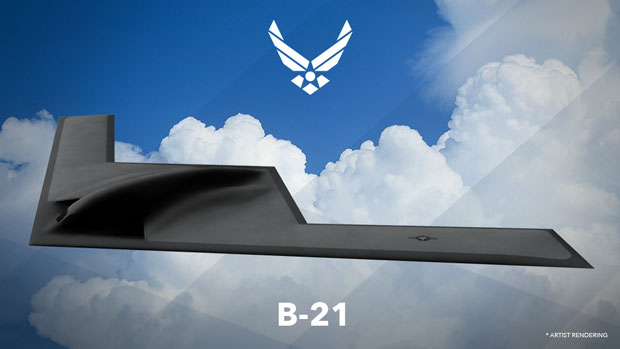Meet The Northrop Grumman B-21, America's Next Gen Strike Bomber
If you’re get a sense of deja vu, we certainly can’t blame you; the B-21 render that Northrop Grumman released looks remarkably similar to the B-2 Spirit, which first took flight in 1989 and went into service in 1997. And this is understandable, as the U.S. Air Force isn’t looking to break the bank by using unproven technologies, as it is often prone to doing when it comes to new weapons acquisition programs.
“[The LRS-B] program is designed around a fixed set of requirements [with] relatively mature technologies, [where we will] build the first version knowing it won't have everything on it that we want or will want," said William LaPlante, the assistant Air Force secretary for acquisition, in a June 2014 speech. "We're building an adaptable approach with an open architecture, [with] places on the wings that allow us to customize sensors and weapons with future capabilities."
“The platforms and systems that made us great over the last 50 years will not make us great over the next 50,” said Air Force Chief of Staff Gen. Mark A. Welsh III. “There are many other systems we need to either upgrade or recapitalize to ensure viability against current and emerging threats… the only way to do that is to divest old capability to build the new.
Development costs for the B-21, including finalizing its design and delivering prototype airframe, is expected to top $21 billion. In addition, each aircraft is expected to cost at least $550 million, of which 100 will be built. Lifetime costs are expected to top $55 billion. Those 100 B-21s will be tasked with replacing and/or complementing the fleet’s 20 remaining B-2 bombers, 100 B-1B bombers and around 100 B-52 bombers.
The B-52 has been service with the U.S. Air Force since 1955 and is expected to at least serve until the late 2040s. However, given how averse the B-52 has been to death — it has outlived its [canceled] B-70 replacement and still serves alongside the B-1B and B-2 which were both designed as replacements — it could likely end up flying for over 100 years, which is unprecedented for such a large, heavily stressed airframe.


